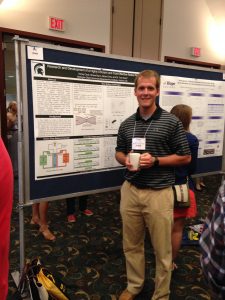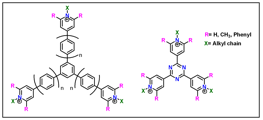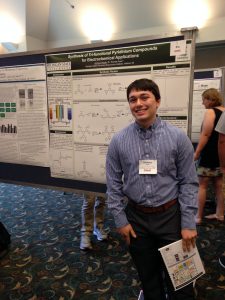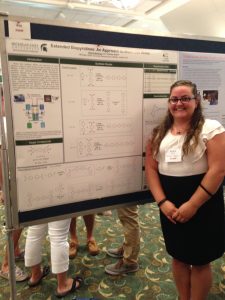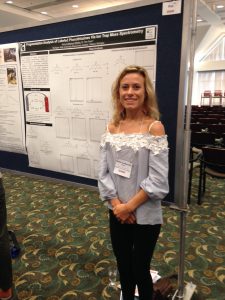Korey started at MSUBI early in 2017. He is a man of many talents and interests. He was the lone engineer in the lab this summer and managed to create a working redox flow battery prototype system. Outside of our lab, he came very close to installing a working river turbine in the Grand River and got engaged to his girlfriend this summer.
Research and Development of a Highly Efficient and Cost Effective Redox Flow Battery; Korey Cook, Dr. Tom Guarr, Shane Mann and Brian Chiou
Renewable energy generation technology is growing rapidly and increasingly relies on energy storage systems to balance fluctuating energy demand. The high manufacturing cost and limited life cycle of current commercial battery technologies inhibits large-scale grid storage. This research project focused on creating an organic redox flow battery prototype that demonstrates significantly lower manufacturing cost and minimal electrolyte degradation to increase total charge cycles. The developed prototype system includes electrolyte tanks, pumps, and a reactor that continuously and evenly distributes electrolyte solutions across an ion exchange membrane. This battery system demonstrates a flow battery that can be scaled for long-term energy storage.
Korey is a Mechanical Engineer from Hope College, class of 2016. This fall, he will continue to work with us, and he will begin his MS in Engineering program at Michigan State University with Tom Guarr and Andre Benard as his advisors. We are very excited to watch him continue his work developing new-generation redox flow batteries.
